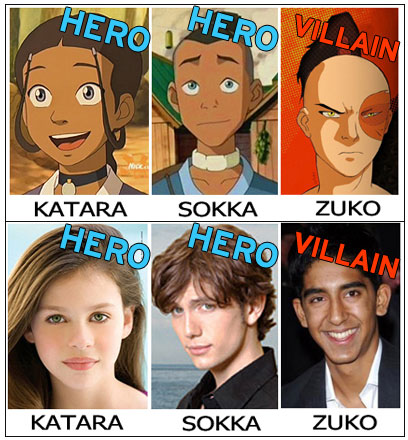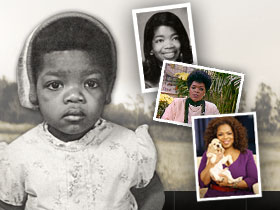
The Hilye of the
Prophet Muhammad
By Mohamed Zakariya
“Calligraphy presents the thought as the source of
the image, not the image as the source of the thought.”
-- Nabil F. Safwat1
 |
| How does one describe the indescribable? How does one form an image of that which cannot be portrayed? That is what thehilyedoes--it gives parameters to the imagination so that one can think about the Prophet with a mental or spiritual image to hang onto, yet not attempt to visualize him or portray him in a painting. But thehilyeis not an icon in words. As impressive and accurate as the manyhilyetexts are, they still remain vague, contrary to the claims of literalists, who would reject these texts as being visual portraits. That, of course, would not be acceptable to Muslims. Hilye2is the Turkish form of the Arabic wordhilya, which has several meanings, including physiognomy, natural disposition, likeness, depiction, characterization, and description. But these dictionary definitions only begin to convey the real meaning of thehilye,which embodies the Prophet’s moral, behavioral, and spiritual qualities as well as physical appearance. Like most Arabic words,hilyacarries multiple overtones, making it difficult to translate. It has connotations of ornament, beauty, finery, and embellishment. I like to think of ahilyaas a beautiful and significant description. The Hilye in HistoryArabic source literature includes hilye texts describing many important figures. Most prominent of these are thehilyesof the Prophet Muhammad and of his four companions--thechahar yar,or four friends, the first four caliphs and successors of the Prophet, Abu Bakr, Umar, Uthman, and Ali. Interestingly, we also have hilyes for some of the pre-Quranic Biblical prophets. In one of the great works onhilyes,Qasas al-Anbiya,by Tha’labi (d. 1035 AD), we findhilyesfor Moses, Aaron, David, Solomon, John the Baptist, and Jesus. These are related by the enigmatic figure Ka’b al-Ahbar. A learned Muslim of Jewish, possibly rabbinic, origin and a specialist in Biblical lore, K’ab al-Ahbar was a friend and confidant of Umar and the Prophet’s wife, Aisha. Oral literature was possibly the highest calling of the ancient Arabs, and long before thehilyewas used in calligraphy, it was spoken. What first impresses the reader--or listener--about these texts is their compactness, their terseness. They say as much as possible in a few well-chosen words, some of which are profoundly obscure. In my translations of the texts, for example, I consulted both the commentary of Molla Ali Al-Qari, a Hanafi religious scholar of the early 17th century AD, and theLisan al-Arab,a lexicon that includes many of the words used in thehilyes.Yet some areas remain ambiguous or open to interpretation. The wording ofhilyesis carefully composed, with the care one would expect from a keen observer of people, one gifted with a finely honed skill in language. In his narration of thehilye,for example, Hind is mentioned as awassaf,or one who describes. One can hypothesize that Hind had a special gift for this kind of literature, just as some may have a special gift for poetry. Few writers could match these gems of conciseness and beauty, composed as they were with wit, poignancy, intimacy, and rhetorical flourish. These artful descriptions make vivid impressions on the listener or reader. They are quite memorable and played an important part in recalling beloved and respected figures. Hilyeshave some general features in common. They begin with a succinct description of the subject’s physical characteristics, including height, build, complexion, eyes, hair, hands, and gait, then move to the subject’s individual and moral characteristics. Consider, for example, thehilyeof Soloman (the prophet Sulayman, in Islamic terms), as told by K’ab al-Ahbar:
Or take thishilyeof Uthman, the third caliph:
Another interesting occurrence of the wordhilyeis in the title of the famous biographical work in ArabicHilyat al-Awliya,by Abu Nu’aym (d. 1038 AD), which can be translated as “Description (or Depiction) of the Saintly People.” This is an excellent source of information about the early religious figures of Islam and contains much material from their own lips, including, fascinatingly, Ka’b al-Ahbar himself in a long entry. The Hilyes of the ProphetThe most famoushilyetexts, of course, are those that characterize the Prophet Muhammad. In Turkish they are calledHilye-i Saadet(the Hilye of Felicity),Hilye-i Serif(the Noble Hilye), andHilye-i Nebevi(the Prophetic Hilye). The most popular of these texts for calligraphers is one related by Ali ibn Abi Talib, which I translate as follows:
The most comprehensivehilyetext is found in the great work on the Prophet by Al-Qadi Iyad (d. 1149). Here it is, in its fullest version:
From the same work is a shorter, very intriguinghilyetext:
Otherhilyetexts exist, such as those related by Umm Ma’bad and Abu Hurayra. Both of these have been calligraphed by Ottoman artists in the 19th century. In 1897, the Ottoman calligrapher Bakkal Arif Efendi, a refugee from Bulgaria, was commissioned by the Ottoman Printing House to write a largehilyein Turkish. Its text was composed by the Ottoman statesman, poet, and author Jevdet Mehmet Pasha. Displaying ahilyein the home, workplace, or mosque was believed to provide a blessed environment, but a hand-madelevha,or panel of calligraphy, was expensive. A beautifully printed version made thehilyeaccessible to people of lesser means. The Hilye in Calligraphic ArtThe firsthilyesto be produced as an art form were, as far as we can tell, by the great Ottoman calligrapher Hafiz Osman Efendi (the Second Sheikh, 1644-98 AD). He took thehilyetext from Iman Tirmidhi’sAsh-Shama’il al-Muhammadiyaand composed it in the configuration we now associate with thehilye. At the top is theBesmele--that is, the text “In the name of God, the compassionate, the merciful,” often prefixed by the words “It is from Suleyman, and it is …” In the center, generally within a crescent shape, is the main text, surrounded by the names of the Prophet’s four main companions, the first four successors. Under this is a Quranicayat,or verse, usually, “We did not send you [Muhammad] except as a mercy to the universe,” or occasionally, “Truly, you are of a tremendous nature.” The remainder of the text follows, ending in supplications to the Prophet, plus the calligrapher’s signature and date. Very rarely, the whole work is finished with ahadith qudsi(that is, a holy saying direct from God): “Were it not for you, were it not for you, I would not have created the starry heavens.”4 In the art of calligraphy, this form has been very significant, most often written in Sulus and Nesih scripts, both small and large versions. The work is also done in Nestalik script; the first to do so was Mehmed Es’ad Yesari Efendi (d. 1789 AD). Largely ignored outside of Ottoman Turkey, thehilyewas a beloved and honored work there. It is still an important part of the calligrapher’s repertoire. It is common for calligraphy students to compose ahilyewhen they are ready to receive theicazet, or diploma. My case was typical. In 1988, my teacher, Hasan Celebi, informed me that I was ready to receive theicazetand told me to write the text but not to sign it. When I finished the text and sent it to him, he wrote theicazettext under it. He then took the piece to another calligrapher, Sheikh Mustafa Bekir, who, after examining it, wrote to the left of theicazettext thetaskik--confirmation of theicazet.The piece was then illuminated by Hasan Celebi’s son, Mustafa, one of the most prominent illuminators in Turkey. Finally, it was presented to me at a ceremony at the headquarters of the Research Centre for Islamic History, Art, and Culture in Istanbul. There is nothing in the art of Islamic calligraphy quite like illuminating ahilye.It is a challenging and daunting undertaking, due to the composition’s complex structure and layout. It requires careful planning to bring balance and harmony to the work as a whole and to avoid creating focal spots, which are not appropriate in classical Islamic calligraphy. Attempts have been made to producehilyesin other forms and layouts. Sometimes, for example, thehilyeis executed in a small, folding, portable format, or album, as was done by Mehmed Shevki Efendi (1827-87 AD). In addition, Kadiasker Mustafa Izzet (d. 1876 AD) and Hasan Riza Efendi (d. 1920 AD) produced magnificent large-formathilyes,some over four feet in height. Other departures from the traditional format, however, were garish or kitschy in design and have become historical curiosities of little merit. The Significance of the HilyeIn the Hindhilye,Al-Hasan, grandson of the Prophet, said, “I asked my uncle Hind, son of Abu Hala, about the Hilye of the Prophet of God so I might hold fast to it.” I believe this is a clue to thehilyeconcept. Most Muslims and historians of Islam know about the Prophet and his life, which is an open book. He is a daily presence and memory, showing us through his life and teachings the way to the well-lived life and thus the way to God. Muslims love Muhammad and commend him for always doing the right thing, even at his own expense. They appreciate his directness and clarity, his courtliness and manliness, his warmth and bravery. They sympathize with his terrors during the first revelations of the Quran and empathize with the huge burden he had to bear. But they do not and cannot adore him. Adoration is reserved for the Creator alone. An interesting but questionablehadith,which was thought to be genuine until recently, may shed some light on the significance of thehilye.The Prophet said, “He who sees myhilyeafter me, it is as if he had actually seen me, and he who sees it out of love and desire for me, God will forbid the fire of Hell to touch him. He will be safe from the trials of the grave, and he will not be sent forth naked on the day of resurrection.” Thishadith,whatever its status, refers, of course, not to the calligraphic composition of thehilyebut to the physical, moral, and spiritual description of the Prophet. Reading, or even simply viewing, a well-producedhilyecan refresh the heart and mind. It gives us, so many generations later, a kind of intimacy with the Prophet, as though we had known him. To see him in this way is to allow him to show the way. In an authentichadith,the Prophet said, “He who has seen me in a dream, has seen the truth.” His presence must have been so striking that people saw right through him to the prophetical truth he taught. After his death, people wanted to remember him, and thesehilyetexts must have been very helpful in retaining a “memory vignette” his companions could pass to future generations. Since the death of the Prophet, a substantial literature has developed devoted to the things he said and did (hadith) and, later, to his life and times and the circumstances of his prophecy (sira). Thehilyesfit into this framework as they answer the questions, “What was he like? What kind of human being was he?” Hollywood has done prophets a considerable injustice. They are depicted on screen as ranting, ill-clad madmen, flaky revolutionaries, or effete wise men. Thehilyesoffer a better picture of a prophet--of the one who claimed to be the last prophet. Images fixed in the imagination by countless Biblical epics, while often entertaining, do not prepare the mind for the depiction of an actual prophet that we find in thehilyetexts--nor does the image (or non-image) portrayed in the movie “The Message,” which characterizes Muhammad as a 1960s-style social revolutionary. In thehilyeswe find a man who was not physically remarkable, yet attractive to all who saw him--a man who stood out among his peers. He was a man of humility but not humble; a man who was complex yet straightforward. He made time for his family, his friends, and his social responsibilities but left private time for himself and God. He loved the company of women, and he liked a good joke, but he didn’t laugh too much, nor was he quick to anger. He was neither a braggart nor a ranter. He said what he meant and said it eloquently, and there wasn’t an inch of hypocrisy in him. He was the Prophet of God, the model for mankind, yet he did not boast of it. He made it abundantly clear that high ideals never justified bad behavior. He had to deal with the social and theological implications of an idolatry far more terrible in its lumpen banality, its home-made weirdness, than the fire-belching Baals and Molochs of DeMille, and all in 21 years. Muhammad was such a guide to spiritual truth that his wife Aisha said of him, “His personality was the Quran.” It is not part of the truth to be Arab or Afghan, Persian, Turk, or American. Religion is to seek the truth and try to live by it. Muslims believe that Muhammad ushered in the adulthood of humanity: Islam would be enough. It is the privilege of the calligrapher to honor this man through art. Returning over and over to thesehilyes, these eyewitness accounts, one can savor the wonder of the Prophet and the awesome mystery of the Creator. 1Safwat, Nabil F.The Art of the Pen: Calligraphy of the 14th to 20th Centuries,volume 5 of the Nasser D. Khalili Collection of Islamic Art. (London: Oxford University Press, 1996), p. 47. 2Because the word has become known to connoisseurs and historians of Islamic art primarily through calligraphic works composed by Ottoman calligraphers, I prefer to use the more easily pronounced Turkish version of the word,hilye,rather than the Arabichilya,with its hardh.(Although thehilyeoccasionally appears in Persian art, it is nearly completely ignored in other Islamic art traditions.) 3See Isaiah 42:1-4 for a remarkable confluence of meanings. 4In his book on popularhadiths,the 18th century scholar al-Ajluni says this one was found to have been forged, yet in his opinion it is sound in meaning even if not an authentichadith. Music for the Eyes Resources & Papers - Gallery - Occasions - History & Development Home :: Resources & Papers - Gallery - Occasions - History & Development - Tools, Materials, and Techniques |






































![[optimus-prime.jpg]](https://blogger.googleusercontent.com/img/b/R29vZ2xl/AVvXsEhkrblBNPpm4ePQzoW-BwGRCiGoSiZ_PhuQ8ek5UMGa-tMC4YMX8Fm9N1e1V1yu_awgmyt1_zC_yRrIvPRm4PcfDb9x9iEVZwkMvTsH3GPyJsGW73NSukF5QvEbqMsVSyOzA0dsu6C3VxsD/s1600/optimus-prime.jpg)





No comments:
Post a Comment